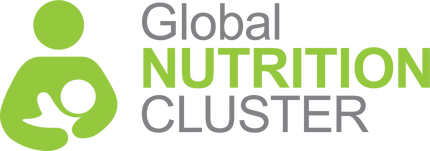Request support on coordination, information management, integration for nutrition outcomes or technical nutrition in emergencies assistance.
التماس الدعم لتنسيق التغذية وإدارة المعلومات والتغذية في حالات الطوارئ
Demander un appui pour la coordination de la nutrition, la gestion de l'information et la nutrition dans les situations d'urgence
Buscar apoyo para la coordinación de la nutrición, la gestión de la información y la nutrición en situaciones de emergencia
Solicite apoio para coordenação em nutrição, gestão de informação e nutrição em emergências
Zimbabwe
L1Coordination mechanism: Sector
Year of activation: 2021
NCC: MoH lead sector coordination with UNICEF Nutrition Manager double-hatting as support
Co_Lead: GOAL Zimbabwe
IMO: Currently no IMO
Sub-clusters activated at the provincial level.
Annual report 2023
January to December 2023
Link to HNO (not available yet)
The nutrition situation in Zimbabwe is precarious and influenced by poor quality of diets with a lack of protein and micronutrients for adequate growth (child minimum acceptable diet is 11%); low rates of exclusive breastfeeding (42%) exposing infants to increased levels of infection at an early age; high levels of low birthweight (8.7%) perpetuating the inter-generational effects of malnutrition; maternal malnutrition including micronutrient deficiencies (32% of pregnant women are anemic); lack of safe water and basic sanitation services; high prevalence of common childhood diseases (including a measles outbreak during 2022 caused by a drop in vaccination coverage following the C-19 pandemic) and a loss of livelihoods due to the current economic situation in Zimbabwe, the effects of the C-19 pandemic, the long-term effects of climate change and the war in Ukraine, all compounding to affect household purchasing power and choice of foods. On top of this food insecurity is projected to increase in 2022-2023 following a below average agricultural season, and the nutrition sector is preparing for a potential increase in cases of wasting over the hunger gap period (Nov 22 - Mar 23).
As the nutrition cluster lead, UNICEF supports the Ministry of Health and Child Care (MoHCC) to implement a multi-sectoral approach to prevent all forms of malnutrition, through the national Care Group platform. Support is targeted to pregnant women and mothers of children less than 2 years old aiming to improve infant and young child feeding practices, responsive care-giving and nurturing care, identify and treat cases of wasting early (through Family MUAC), improve hygiene and sanitation practices, and provide linkages with agricultural support and interventions. In addition, UNICEF supports MoHCC to carry out active MUAC screening to monitor the nutrition situation and identify and refer children in need of treatment for wasting and to ensure availability of treatment for wasting in all health facilities across the country. In 2022-23, 38 high-priority districts have been identified for emergency preparedness based on the levels of wasting as per the ZimVAC 2022. There are 19,775 children estimated to be in need of treatment for severe wasting (across the country), and 1,130,790 children in need of VAS (target for 2023 - 565,395 recieving 2 doses) and screening for wasting, and 400,205 PLW in need of counselling for improved IYCF practices (target for 2023 - 300,154).
- The financial requirements of the nutrition cluster in Zimbabwe have not been met thereby crippling the emergency response. The HRP for 2021 was not officially launched in Zimbabwe making it difficult to use it as a fund-raising tool.
- There are disruptions of health and nutrition services due to Covid19 containment restrictions which have resulted in lower quality of nutrition services; less than expected SAM admissions, less than optimal recovery rates as well as lower than expected vitamin A supplementation coverage. Urban nutrition outcomes were more affected.
- Inadequate personal protective equipment (PPE) for Village Health Workers (VHWs) and Health facility staff to continue nutrition services in the context of Covid-19.
- Although nutrition commodities were generally available at the national level, there were challenges of inconsistent distribution and supply chain with some facilities reporting stock-outs of RUTF and MNPs, hence the need for stronger liaison with the logistics team at Provincial and National levels
- Data quality has remained a challenge both in the routine and emergency systems with the innovative RapidPro system being affected by the service provider's technical issues
| Advocacy Survey | |
| Country Advocacy Strategy developed | No |
| Link to document | |
| Advocacy activities included in annual work plan | Yes |
| Specific WG leading advocacy work established | Yes |
| Preparedness | |
| Contingency plan or ERP plan developed/updated | Yes |
| Link to document | Link |
| Intersectoral Collaboration (ISC) | |
| Intersectoral projects currently under implementation | Yes |
| Clusters engaged | |
| Social Policy, WASH and Child Protection | |
Key Figures
(million)Funding
(million)- Children 6-59 months
- Pregnant and Lactating Women
Total partners (17)
Total Partners
